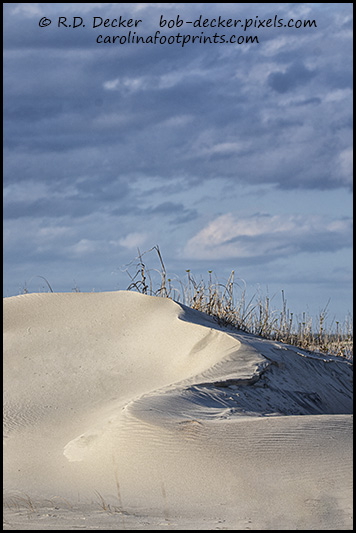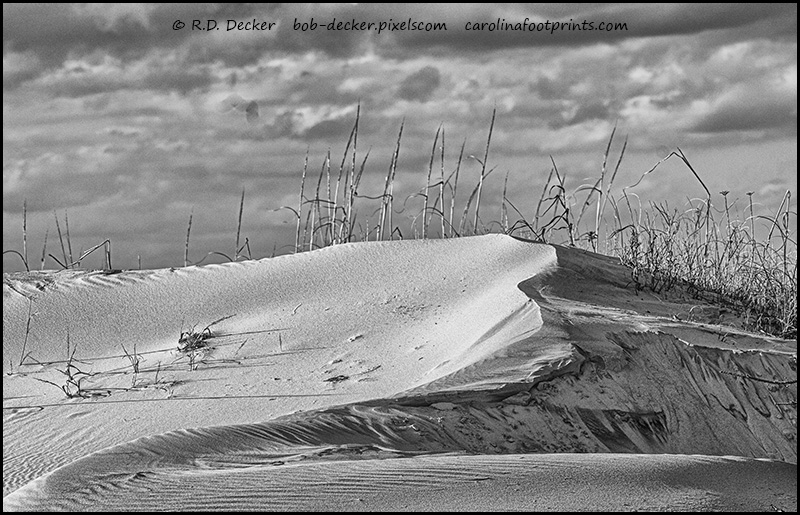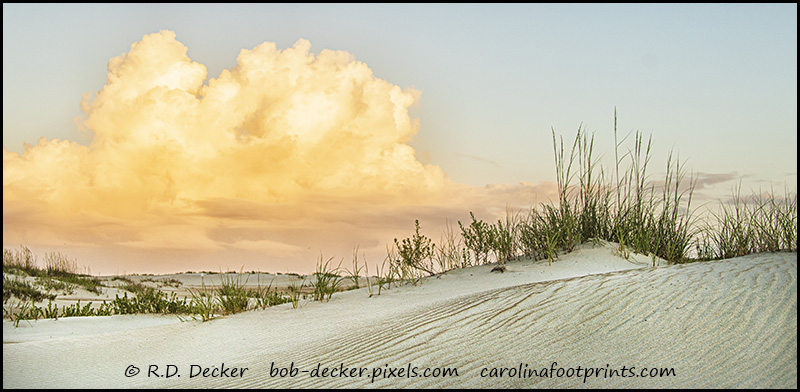As a photographer living in a coastal area trips to the beach are a regular occurrence. When visiting the beach much of my attention revolves around the water, seascapes and beachscapes and the various shorebird found there. For much of the warmer months a lot of the dune areas are off-limits… protecting the nesting and nursery areas for a variety of coastal and oceanic birds. In the winter months the ropes come down and it becomes possible to explore and, more importantly, photograph these amazing natural features. In a constant state of change, being shaped and reshaped by wind, rain and waves, the dune zone is a dynamic and interesting environment to visit. Here are a few of my more recent fine art photographs made in the dune zone.






Let me know what you think. Do you find the dune zone and interesting environment worthy of exploration and photography?
3 Comments
Hello Bob, I love the way you captured the Emerald Isle, North Carolina sand dunes. I’m not sure why I’m drawn to fences on the beach, but I like those images best. Tho I usually try and remove the hand of man from my images, It’s a fine art thing, Like I said try.
They add some cool lines to the image and sell to the beach crowd.
Great imagery! I also like dunes in particular and these look great in black and white. The details in the fence posts is well captured as well!
I really like the one with the fence.